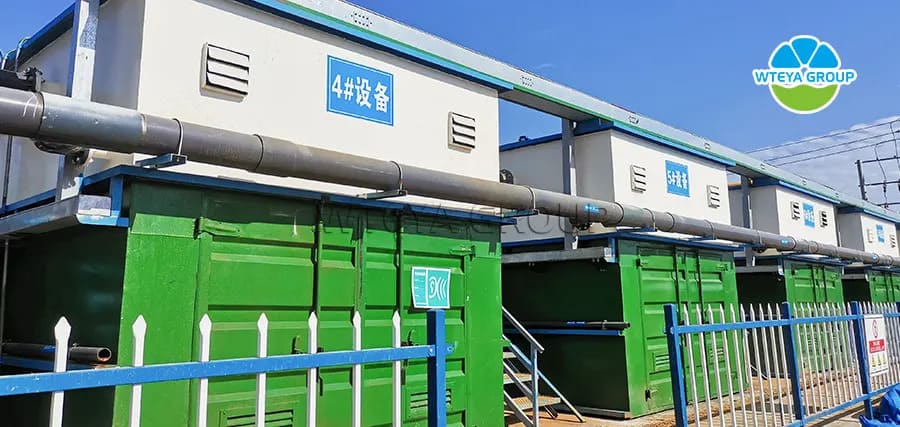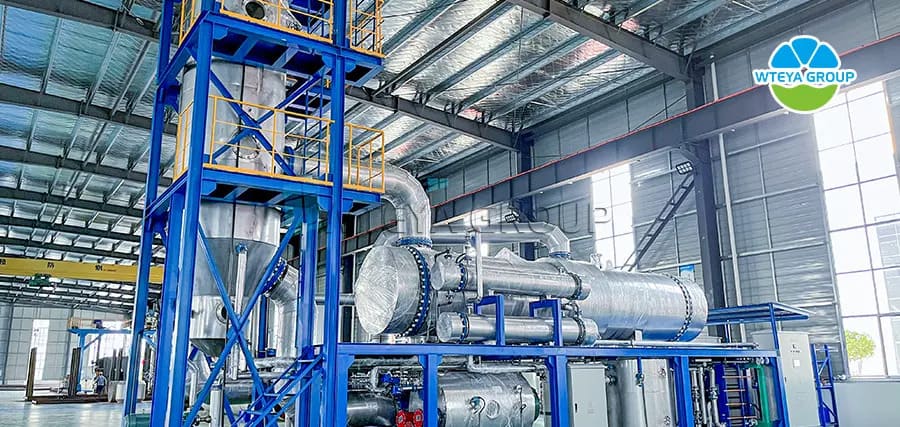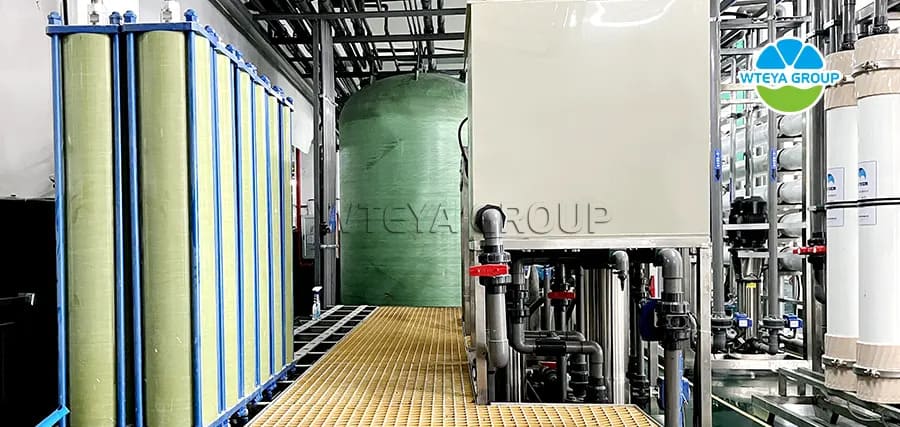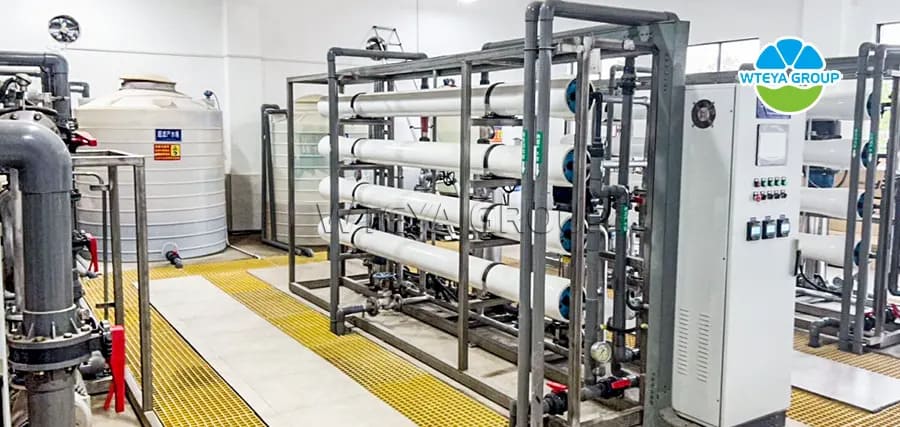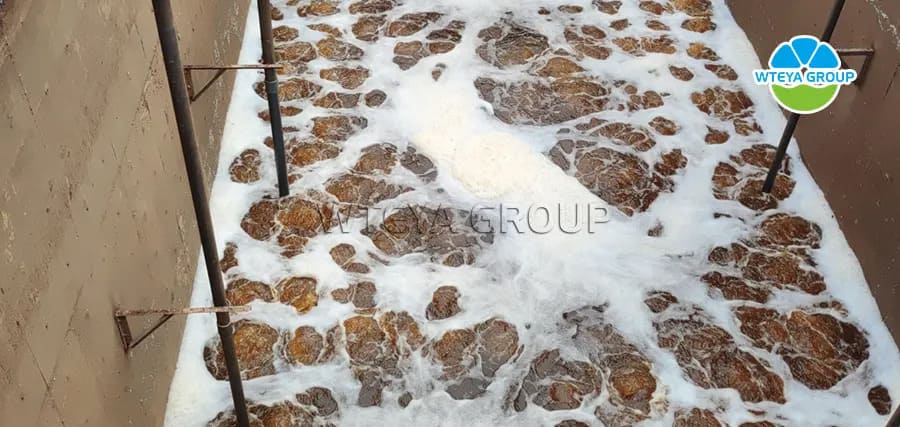Water treatment solutions in the environmental industry
1. Integrated processing equipment
And in production
Integrated wastewater treatment equipment plays an important role in the environmental protection industry, and its widespread application is reflected in the following aspects:
Waste treatment in cities:
Residential areas: Integrated wastewater treatment equipment can treat wastewater generated in daily community life, including kitchens and bathrooms. It also waits for the generation of wastewater, effectively removing organic matter, nitrogen, and other microorganisms on phosphorus and nutrients, ensuring the quality of standard rubber water, doing a lot of work to alleviate the pressure of urban wastewater treatment plants, and avoiding untreated wastewater directly entering natural electrocardiograms, causing ecological and environmental pollution.
Tourist attractions and resorts: In areas with significant population density changes such as scenic spots and resorts, integrated equipment can flexibly respond to changes in wastewater, ensuring temporary or seasonal efficient treatment of wastewater and protecting sensitive ecological environments.
(b) Wastewater treatment in rural and remote areas:
Rural household waste: Considering the shortcomings of China's rural waste treatment system, the comprehensive equipment, due to its small size, easy installation, and simple operation and maintenance, is particularly suitable for the distribution of household waste treatment in rural and small communities, improving the rural water environment, and supporting the implementation of rural recovery strategies.
• Remote areas: For remote areas with inconvenient transportation and insufficient power supply, integrated wastewater treatment equipment can be used to provide power using solar, wind, and other renewable energy sources. It can operate without the power grid, solve local wastewater treatment problems, and protect water resources and water quality in ecologically fragile areas.
(iii) Enterprises and public services:
Hotels, restaurants, and shopping centers: Wastewater generated from commercial activities usually contains high concentrations of organic matter and fat. Integrated equipment can focus on pre-treatment and chemical treatment, effectively removing pollutants and ensuring discharge compliance.
Schools, hospitals, sanatoriums: The waste in these areas may contain special pollutants, such as drug residues, disease microorganisms, and other waste beyond daily waste. This device is integrated with a disinfection device, which can achieve high standards of wastewater treatment, prevent the growth of pathogens, and protect public health and safety.
(4) Industrial wastewater treatment:
Small businesses: For small industrial enterprises that discharge wastewater but have complex pollution types, integrated wastewater treatment equipment can be customized, especially for industries such as food processing, printing and dyeing, electroplating, etc., to meet discharge standards or reuse.
Industrial Park Treatment Center: Establish comprehensive wastewater treatment stations and enterprise industrial wastewater treatment centers within the park, optimize integration, share resources, reduce costs, and promote centralized management to ensure that all waste meets standards.
(5) Emergency wastewater treatment:
Disaster response: After disasters such as floods and earthquakes, comprehensive equipment can be quickly deployed to treat a large amount of temporary domestic wastewater in affected areas, prevent groundwater pollution, and protect safe drinking water and sanitation conditions.
Temporary site and campsite construction: During construction or regional operations, comprehensive equipment can serve as temporary wastewater treatment facilities to treat worker waste, meet environmental legislation requirements, and protect the surrounding environment.
(6) Ecological restoration projects:
Swamp restoration and protection: In swamp ecosystem restoration projects, integrated equipment can serve as pre-treatment facilities for artificial swamp systems, reducing the processing burden on swamp plants, improving the processing efficiency of the entire system, and ensuring the restoration of swamp ecological functions.
(7)Water reuse:
Water reuse: After being treated by comprehensive water equipment, it can be used for cleaning toilets, irrigating greenery, landscaping, and non drinking water after deep treatment. Water can be used reasonably to minimize water shortage issues.
Technical Principles
This equipment mainly uses natural waste and coagulation technology, filters, centrifuges, and biotechnology, as well as first, second, and third treatment technologies to treat wastewater.
What kind of results can we achieve
We can operate fully automatically without the need for anyone, saving a lot of labor; Delay (SS) can achieve a removal efficiency of 80-95%, and organic removal efficiency can reach over 80%.
2. Evaporation devices: such as MVR evaporation device, forced circulation device, low-temperature evaporation device, and multi effect evaporation device
And in production
Evaporation equipment is mainly used in the environmental protection industry for wastewater treatment, resource recovery, and environmental recovery, as shown below:
(a) Wastewater and Zero Discharge Treatment (ZLD)
High salt wastewater: Industries such as chemical, pharmaceutical, printing and dyeing, electroplating, and chemical coal will generate a large amount of high salt wastewater. Evaporation devices (such as multi effect steam generators, MVR steam generators, TVRs, etc.) can evaporate water from wastewater to produce pure and pure water. Concentrates can be further consolidated or extracted, pure water can be reused in production processes or standard waste, reducing wastewater and mining volume, and meeting the increasingly strict requirements of environmental regulations.
Wastewater treatment of heavy metals: Wastewater contains heavy metal ions, and steam equipment can concentrate heavy metal salts in it, thereby reducing environmental pollution risks and increasing economic benefits through chemical agents, energy storage, and recycling of heavy metal resources.
(b) Resource recycling and by-product processing
Salt crystallization and recovery: In certain chemical or wastewater treatment processes, the evaporation device can cool the crystals that separate salt values, allowing saline wastewater to concentrate on saturated wastewater, such as sodium sulfate, sodium chloride, calcium chloride, and resource recovery.
Useful component recovery: The evaporation device can be used to recover valuable components from wastewater, such as amino acids, organic acids, alcohols, acetone, etc., separate and return them to the production process, reuse resources, and reduce production costs.
(iii) Energy conservation and emission reduction
Waste heat: In the process of wastewater evaporation, the evaporation device can use temperature waste, cold water vapor, or condensate from the enterprise as a heat source, effectively utilizing energy and reducing total energy consumption.
Reducing solid waste: Treating wastewater through evaporation equipment can greatly reduce the generation of solid waste (such as residue evaporation), lower the cost of solid waste treatment, and lower environmental pressure.
(4) Environmental protection and historical heritage management
For the neutralization or reconstruction of industrial facilities remaining in high salt processes, high organic waste, heavy metals, and steam equipment, it can be used as one of the management technologies to support environmental remediation through wastewater concentration, safe waste treatment, or resource recovery.
(5) Special chemical production
When producing some special chemicals, such as high-purity water salts and special crystalline salts, evaporation equipment is one of the important equipment. By precisely controlling the evaporation and crystallization conditions, the production meets the special requirements of crystalline products.
Technical Principles
MVR evaporator: The evaporator reuses the energy generated by its own secondary steam to reduce the demand for external energy. The operation process of MVR is to compress steam in the refrigeration compressor, increase temperature, pressure, and temperature, and then enter the heating and condensing system to utilize the potential temperature of steam. Except for the drive start, no steam is discharged from the second steam of the evaporator during the entire evaporation process. It is compressed by the compressor, causing an increase in pressure and temperature. The steam is then sent to the heating chamber to maintain liquid boiling.
Forced evaporation device circulation: The circulation of solution in the device mainly relies on the forced flow generated by external forces. The cycle speed is usually between 1.5 and 3.5 meters per second. Thermal energy and production capacity. The raw material liquid is pumped upwards from the bottom by a circulating pump, which flows upwards in the pipeline of the heating chamber. The mixture of steam and liquid foam enters the evaporation chamber and is separated. The steam is discharged from the top, the blocked liquid drops, is sucked into the conical bottom by the circulating pump, and then enters the heating pipe for further circulation. It has heat transfer coefficient, salt resistance, soil resistance, strong adaptability, and is easy to clean. Suitable for industries such as scale, crystal, temperature sensitive (low temperature), high concentration, and high viscosity, including chemically insoluble solids, food, pharmaceuticals, environmental protection technology, and evaporation recovery.
Cold evaporator: The temperature of the cold evaporator refers to the normal operation of woodworking evaporation at 35 to 50 ℃. After arriving at Ye Wei, solidification is carried out in each bucket of water, and the pump works to generate a vacuum. She is operated by the automatic water and evaporator - YaSuji, which generates heat to evaporate and heat the wastewater. The wastewater is in a zero vacuum state, and the temperature of the wastewater rises to around 30 ℃. The wastewater begins to evaporate before completion. After evaporation, YaSuJi sets the temperature to 35-40 ℃ and compresses the local area network with cold water to generate temperature. While the water rapidly evaporates, it cools the local area network through an expansion valve and wants to operate the heat absorption system after evaporation, rising to cold steam. The odor decomposition solution is dissolved in ChuShuiGuan, and of course, it is compressed and absorbed by YaSuJi ZhiRe to absorb both hot and cold, just reheat the wastewater. If the bubble is detected by the sensor during the evaporation process, the defoamer will automatically add defoamer. After one cycle is completed, the concentrate will be discharged (the cycle time can be set). After the evaporation cycle is completed, the compression pump stops working, focuses on the open pneumatic valve tube, pressurizes and evaporates, and focuses the hydraulic pressure on the barrel.
What kind of results can we achieve
Our company's evaporator can reach a concentration of 5-100 times under different water quality conditions, making it more energy-efficient, easy to adapt, highly automated, environmentally safe and stable. It has been widely used in industries such as chemical, pharmaceutical, food, and environmental fields.
3. Diaphragm separation equipment: DTRO, STRTO, NF, etc
And in production
The diaphragm separation equipment in the production and processing of battery active materials has important application value in the following aspects:
(a) Purification and purification materials
Ion separation and concentration: Separation membrane technology, especially the nak filter (NF) and waterproof membrane (RO) layer, should be used for deep cleaning of lithium-ion salt solution battery materials required for anode production (such as lithium batteries, Liu Suan lithium batteries with CO2 saturation standby), effectively removing acidic and pure metal and organic pollutants, improving the quality of lithium-ion salt solution batteries, and providing fuel for high-quality anode composite materials.
(b) Solvent recovery and reuse
Organic solvents are used in the production of certain anode materials, such as hot solvents. Membrane separators can separate and recover wastewater or waste containing organic solvents, reduce solvent consumption, reduce waste production, and reduce environmental pollution risks.
(c) Separation of intermediates and by-products
Extraction and grading: In the synthesis stage of extracting anode materials (such as hydroxides or carbonates), microfiltration (MF) or ultrafiltration (UF) membrane cleaning and grading can be performed to remove small impurities, improve particle distribution and extraction purity.
Desalination of by-products: In certain humid processes, by-product solutions containing a large amount of inorganic salts can be produced. Membrane separation technology can help remove these salts, allowing by-products to be reused or safely treated.
(d) Wastewater treatment and recovery
Reuse of wastewater: Wastewater from the manufacturing process of battery anode materials typically contains higher concentrations than metal ions and other toxins. Membrane separators, such as reverse osmosis or nanofiltration membranes, can be used for deep wastewater treatment, water reuse, reducing clean water consumption, and wastewater discharge.
Heavy metal recovery: For wastewater containing valuable metal ions (such as cobalt, nickel, manganese, etc.), ion exchange membranes or special separation membranes can be used as selective and recovery membranes, achieving dual goals of resource recovery and environmental protection.
Technical Principles
This process uses special membranes to separate components from liquid or gas mixtures. The basic principle of this technology is based on the differences in the speed and ability of different components passing through the membrane, which can be determined by the characteristics of the components, the characteristics of the membrane, the concentration differences on both sides of the membrane, pressure gradients, potential gradients or steam, or various factors. Membrane separation methods include microfiltration, ultrafiltration, filtration, reverse osmosis, and electrofiltration, each of which is suitable for different separation needs. For example, microfiltration and ultrafiltration filter molecules or solutions of different sizes based on the pore size of the membrane; Reverse osmosis refers to the pressure higher than the osmotic pressure of the solution, causing the solvent to pass through the membrane and block the solution; Electrodialysis is the selective utilization of ions in a solution using ion exchange membranes under the action of an electric field.
What kind of results can we achieve
Thin film separation equipment can be integrated into continuous and automated production lines to achieve continuous material separation, purification, and recycling, improve production efficiency, reduce batch quality changes, reduce energy consumption, comply with modern battery production, green production, and improve production efficiency.
Diaphragm separators are used in the manufacturing industry of battery anode materials for processing and important materials. A wide range of raw materials are mainly used in product anodes, intermediate and secondary separation, wastewater treatment and recovery, gas treatment, and promoting continuous optimization of production processes. They play an important role in improving the quality of anode materials, reducing costs, saving energy, reducing emissions, and achieving sustainable production. With the development and maturity of membrane separation technology, its future in the battery material industry will be even broader.
4. ECC oxidation equipment:
And in production
Improving the efficiency of wastewater treatment, wastewater reuse, and water quality protection is crucial in multiple fields such as oxidation catalytic equipment, urban wastewater treatment and standard revision, groundwater and surface water pollution management in the industrial wastewater treatment industry. With the development of catalyst science, equipment design, and optimization technology, the application of catalysts in the water treatment industry will be more extensive and in-depth. Specifically, as follows:
(a) Industrial wastewater treatment
Wastewater Chemicals: Wastewater from chemical production processes typically contains complex and difficult to decompose organic compounds, such as aromatic compounds, polycyclic aromatic hydrocarbons, phenols, dye intermediates, etc. Due to the large number of these devices (such as too much electricity, which helps to create too much ozone layer, and too much Fendum waiting), they become powerful by generating too many reactive oxygen species (such as OH). These organic pollutants occur too much, and they will decompose into small molecules or carbon dioxide gas fields and water, because agricultural waste will reduce the chemical substances (COD) and biological toxicity of Xuyang Liang, improve the biochemical wastewater, and promote further or direct biological treatment to meet wastewater discharge standards.
Pharmaceutical wastewater: Pharmaceutical wastewater typically contains organic substances that are difficult to decompose, such as antibiotics, hormones, intermediates of synthetic drugs, and may contain biological inhibitors. Catalytic oxidation can effectively destroy organic pollutants, reduce their inhibitory effect on biological treatment systems, and remove antibiotics from wastewater to prevent their accumulation in the environment, endangering the environment and human health.
Wastewater Petrochemical: Wastewater petrochemical contains complex pollutants such as hydrocarbon oil, polycyclic aromatic hydrocarbons, and sulfides. Oxidation catalytic equipment converts these pollutants into easily biodegradable small molecules or harmless materials through catalytic oxidation, in order to achieve wastewater treatment effects and reduce the load of subsequent biological treatment systems.
Wastewater dye printing: Wastewater dye printing contains a large amount of dyes, additives, and organic compounds, which are dark, high colored, and have poor biochemistry. Oxidation catalytic equipment can effectively remove colorless organic compounds from wastewater, greatly reduce chromaticity, and improve the biochemical substances in wastewater, providing good conditions for further chemical or deep treatment.
(b) Urban wastewater treatment and standard improvement
Robot Depth 2: To treat biomimetic organisms that have been treated but still cannot meet the discharge standards of the wastewater treatment plant or the requirements of Huiyong. If there are too many equipment, it can be deep capacity treatment, adding and removing organic pollutants, stopping waiting for nitrogen, residual water to improve water quality, and achieving standard exhaust gas or Huiyong.
Upgrade of wastewater treatment plant: In the existing wastewater treatment plant of the renovation project, catalytic equipment can be used as a treatment unit to supplement or replace the original process, in order to meet increasingly strict discharge standards and water quality requirements, and improve the overall treatment efficiency of the wastewater treatment plant.
(c) Groundwater and surface water pollution management
Remediation of organic pollutants in groundwater: For groundwater contaminated with organic matter, especially groundwater sources containing organic pollutants (POPs), it is helpful for the application or existence of too many equipment in groundwater technology remediation. Using too many excavators to destroy persistent organic pollutants in groundwater, improve water quality, and protect groundwater resources.
Remediation of lakes, rivers, and surface water: In the engineering of treating organic pollutants in surface water, catalysts can serve as treatment facilities or mobile treatment platforms to quickly and efficiently treat discharged polluted water, reduce the concentration of organic pollutants, and promote ecological restoration of water.
Technical Principles
ECC catalytic oxidation technology is a new technology developed by the company, which uses catalysts to promote the oxidation reaction between organic pollutants and oxides (such as oxygen, ozone, hydrogen peroxide, etc.) under specific conditions. The final product is harmless or low toxic, achieving pollutant removal effect. The oxidation catalytic equipment varies according to different applications and objects, using different oxidants, catalysts, and reaction conditions to meet practical needs.
What kind of results can we achieve
The efficiency of company type organic removal products (CODcr) exceeds 80%, and some can exceed 95%. It can also significantly reduce the heating temperature of the reactor, the probability of steam device bubbles, and system membrane fouling.








